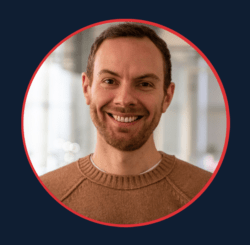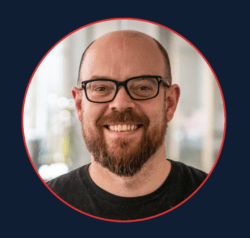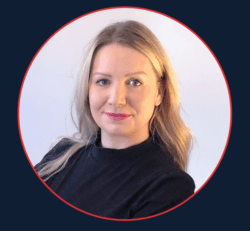The origin of Motion Design studios, as told
by their founders.
By Ben Haworth, co-founder and creative director at Flipbook Studio

Editor’s Note: In this series, we’ll be hearing from the founders of creative studios recounting their tales of how it all began. Each studio and founder are at different stages in their journey, but whether they’re 3, 10, 15, or 20 years in the making, these candid accounts offer unique insights into what it takes to own and operate a business in the world of Motion Design.
From deciding to go it alone to growing a team, to riding the unpredictable wave of technology, to evolving through a pandemic and gearing up for the future, these studios all have inspiring stories to tell.
VFX and animation are known to be incredibly competitive markets, with studios of all sizes battling over the same projects. It can be as frustrating as it can be highly rewarding.
I’ve been working in the VFX industry for over 25 years, and I’ve witnessed many changes, both from the artistry on show and the developments in technology.
Over the years, I’ve learned many lessons, and a crucial one to pass on is that it’s not all out of your control. By continually adapting to new technologies and workflows and strategically growing in response to your increasing workload, it’s possible to survive (and even prosper) as a new creative studio.
Where it all began
Both myself and Andrew Lord, Flipbook’s co-founder, took unique paths into VFX and animation.

Andrew Lord
In hindsight, our contrasting roots never seemed much like colliding.
I initially studied to become a wildlife cameraman. Things changed for me when I was offered a work experience placement in the graphics department at Granada TV in Manchester. Whilst there, I was working in CGI and seemed to develop my skills relatively quickly. There weren’t any courses for CGI at the time, so when Granada offered me a full-time job, I immediately accepted and dropped out of uni.
Meanwhile, Andrew studied Geology and then an MSc in Geographical Information Systems, working for an energy and utilities consultancy up in Scotland for a number of years. Somehow, he combined his experience programming and visualising geological data with his love for films and gaming and parlayed it into a project manager role at a studio called Redvision.
When Andy arrived at Redvision, I’d already been there for a few years. He’ll probably read this article, but that’s not the only reason I’ll admit that he’s a likeable guy. We got on straight away, and with his personality, he was great with clients.
As for me, well, back then, everyone was a generalist, so we could all do a bit of everything. As more people joined over the years, though, I found my place running the Flame suite and heading up the compositing.

Ben Haworth
Technology at the time
At the start of my career, motion graphics revolved around the closed structure of Quantel equipment with the capacity of just one minute of moving image before it needed to be transferred to DigiBeta. For those too young to picture this era, my tablet used to have a pen attached to it, with a wire!
During our time at Redvision, the hardware was developed out of SGI boxes, and it all became more accessible with the advent of Digital Fusion, Nuke and After Effects. Not only did this lead to many more university courses in Motion Design and CGI, but it also made it financially possible to set up a company.
Building a business from scratch
Andrew and I shared some growing frustrations with our roles. With the hindsight of running our own studio, we can look back at that now with a pinch of salt. It’s so easy to see flaws and have your own opinions on how a business should operate when you’re not the ones running it.
I suppose, in truth, it was the realisation that we couldn’t satisfy ourselves working for somebody else, and thanks to a strong belief in our complementary skill sets, we created Flipbook Studio.
We found angel investors based on our business plans who agreed to invest in us in exchange for shares in the business. They helped us get the kit we needed and housed us for the first year.
With just the two of us working in the company to start with, our first hurdle was balancing the workload. My background was CGI, but I was still rusty in a few areas, and Andy was the account manager / business development guy. This was a great foundation, but it wasn’t going to be enough to win the big projects. We knew that collaborating with artists and freelancers would be critical to get Flipbook off the ground successfully.
It felt like a big gamble at the time. We were setting up a business during a recession, and as much as we’d worked in Manchester for a long time and had a tremendous amount of contacts, we were still a start-up. We just didn’t know if these creatives would trust us with their work.
To minimise this risk, we also set out to create a more collaborative ethos, embracing working with other studios. There are still so many highly skilled artists in Manchester that are often overlooked because of their location, but eleven years ago, this was even more relevant. Ultimately it paid off, and working with both freelancers and other studios is still a cornerstone of our business today.
As a start-up, we needed something that would help set us apart from the giants we’d be competing with. We constantly looked at innovative new hardware and platforms, trying to figure out how we could create engaging content for them.
One of the first high-profile jobs we secured was a TVC (a television commercial) with TBWA Manchester for the cod-liver oil brand, Seven Seas. Our credentials were unremarkable at the time, and we had low expectations that TBWA would opt for our services. However, with some creative initiative, we went ahead and produced a VFX test piece to show off our idea for the advertisement…
Enter frame: Our arms were raised to the heavens in mock worship of a large shimmering Cod Liver Oil tablet that Ben had created and comped in post. They loved it. The test did the trick, and we were off. This is an excellent example for other studios starting out: taking the time to be creative can set you apart regardless of your experience on paper.
Growing the company
We hired our first employee within the first year. We were quite apprehensive, as it’s a big responsibility to take on staff as a young business and give them a sense of security. But Amy had been freelancing with us regularly, and after a few conversations, we took the leap and employed her. She hit the ground running, injecting the team with an extra creative influence and complimenting my skill set with her talent for modeling, animating and concepting.
Six months later we won a big job and using the revenue we were able to employ a second person, our new production manager, Jo.

Jo Wilkinson
One thing we’ve always been conscious of is the people who make a company run. Gaining new clients, keeping them and managing the projects smoothly is as vital to a company as doing the work. But it’s also essential to maintain balance in the team. We try to make sure we have enough work coming in, but not so much that it overloads the production managers. We need to keep the artists busy but not burden them with managing jobs. If we ever work out how to keep that consistent, I’ll be sure to let the world know.
By year four or five, we were doing well enough to buy our shares back from our investors, and as the years progressed, we continued adding to the team. Numbers fluctuate in the studio with our current capacity of 30 artists. This is made up of a core team of full-time artists and digital artists of shorter/project contracts.

That’s not to say it’s always plain sailing. As with most businesses, cash flow has always been the scariest part; clients paying late when we have bills to pay. Evening out the curves of money coming in and money going out is always an ongoing consideration, and it’s just another example of the balance we have to try and maintain as owners. In recent years we’ve worked on two series of the Worst Witch, which always helps ease these kinds of worries, as they’re the kind of projects that last ten months.
When we started out, we were a tiny outfit and therefore always focusing on innovation to stand out. As we’ve grown, we’ve kept that ethos and have continually paid attention to the way the landscape of the industry has shifted, evolving with it.
It’s a very competitive and flooded market out there now, but the demand for visual content is higher than ever.
[sp_wpcarousel id=”72801″]
The Pandemic
The pandemic has made considerable changes to the entertainment industry and how motion graphics, CG and animation are utilised. We had to adapt quickly to remote working pipelines – we made sure everyone had machines at home and fast links to the servers.
Remote, secure connections provide access to our work servers and render farm, and we’ve been using various cloud-based communication and project management tools to share WIP and keep creative conversations going.
We have certainly missed some of the spontaneity and social interaction of working in close proximity in the studio. Still, we’ve managed to successfully adapt and keep a high level of output remotely, something we’re proud of considering the speed at which adaptations needed to be made. The last year has emphasised the importance of assembling a team that works well together; I’ve found this is vital throughout the ten years we’ve been operating.
Where the technology is heading
It’s no secret that real-time rendering through game engines is becoming the go-to solution for a whole host of entertainment projects. The Unreal Engine has really taken the industry by storm. In fact, real-time engines are already in use across cinematic production. Disney has led the way in recent years with scenes from Finding Dory and Rogue One: A Star Wars Story utilising the Unreal Engine 4. And the hugely popular, The Mandalorian used real-time game engines and virtual LED production sets for the majority of its episodes.
TV is the next frontier, we already see real-time in live broadcast events, and we’re set to see the technology more and more in other forms of televised entertainment. If you’re a creative studio in the motion graphics or VFX industry, you need to be equipped with the right tools for real-time technology now.
It’s been an incredible decade for us with plenty of ups and downs – it’s always great to hit your 10th year in the middle of a pandemic! But we haven’t got any plans to slow down just yet, and we have a lot of exciting projects and developments on the horizon.
One last thing
If I were to give some advice to anyone getting started with their first motion graphics or VFX studio, it would be to work with clients, not for them, and similarly, to have your staff work with you, not for you.
If you have the mindset of working with a client, you can approach their work from a different angle. It’s a case of not looking at a board or script and saying, “that’s not possible,” but instead having the confidence to say, “what if you did X, Y and Z, instead?” It’s about finding solutions for whoever we’re working with. We try to make the projects we work on more personal to us, and in the end, we feel it gives a better result.
As for your staff, it’s important to build an environment where everyone can have creative input. We’re all about problem-solving, and it doesn’t matter how long you’ve been in the industry; no single person has all the answers. It’s vital to give people input, so we can work together to find the solutions. Creatively it can make our pitches better, too, as it gives us unique elements from various contributors and helps us remove the ideas that aren’t as strong.
Ultimately, it’s about giving people the room to succeed or fail because on the end of either is where the growth happens.
Studio Stories is a Motionorapher initiative created and edited by @Stuart Groves.
To tell your studio’s story, please submit your details to OOY on Motionographer.com.








